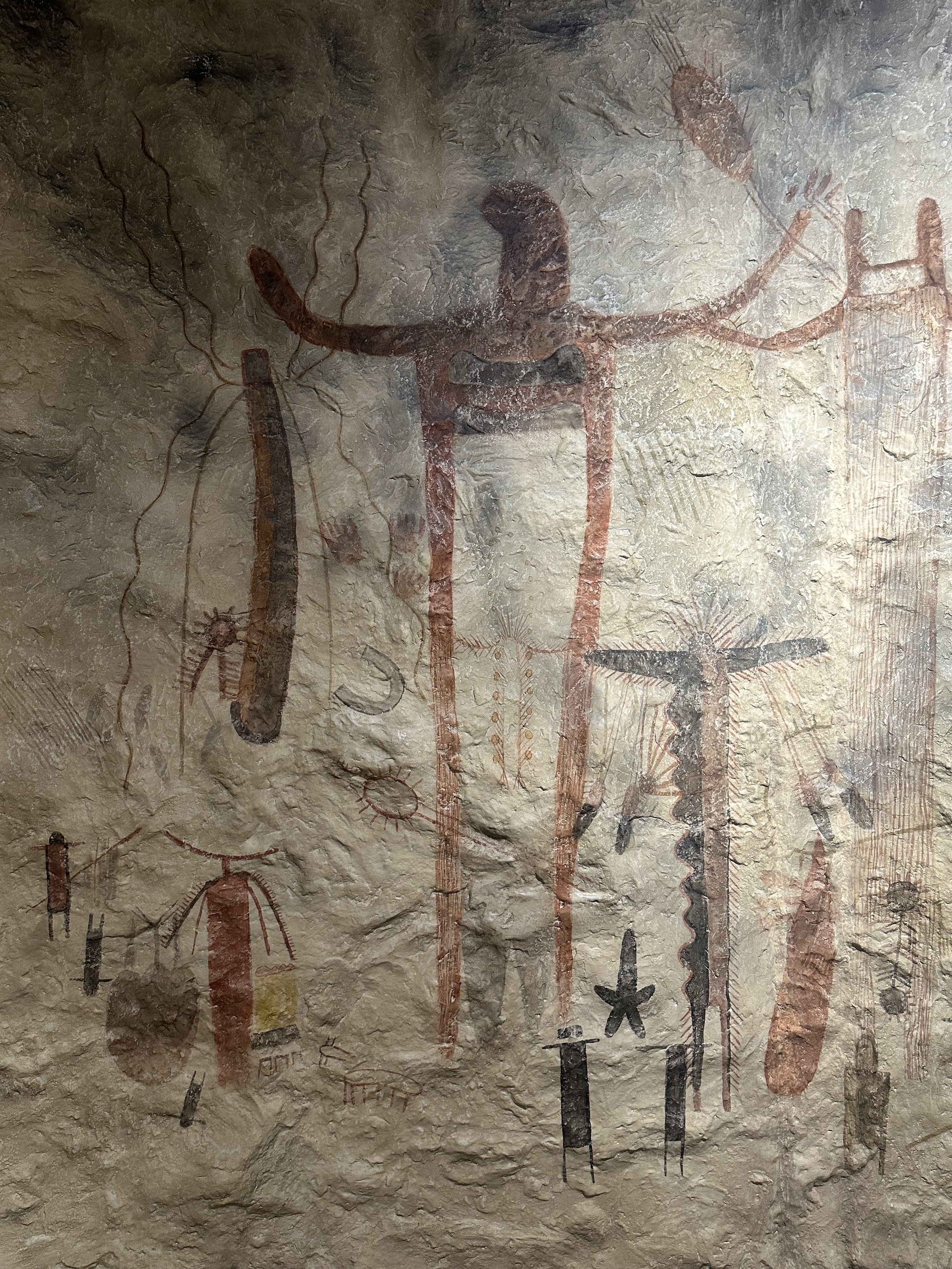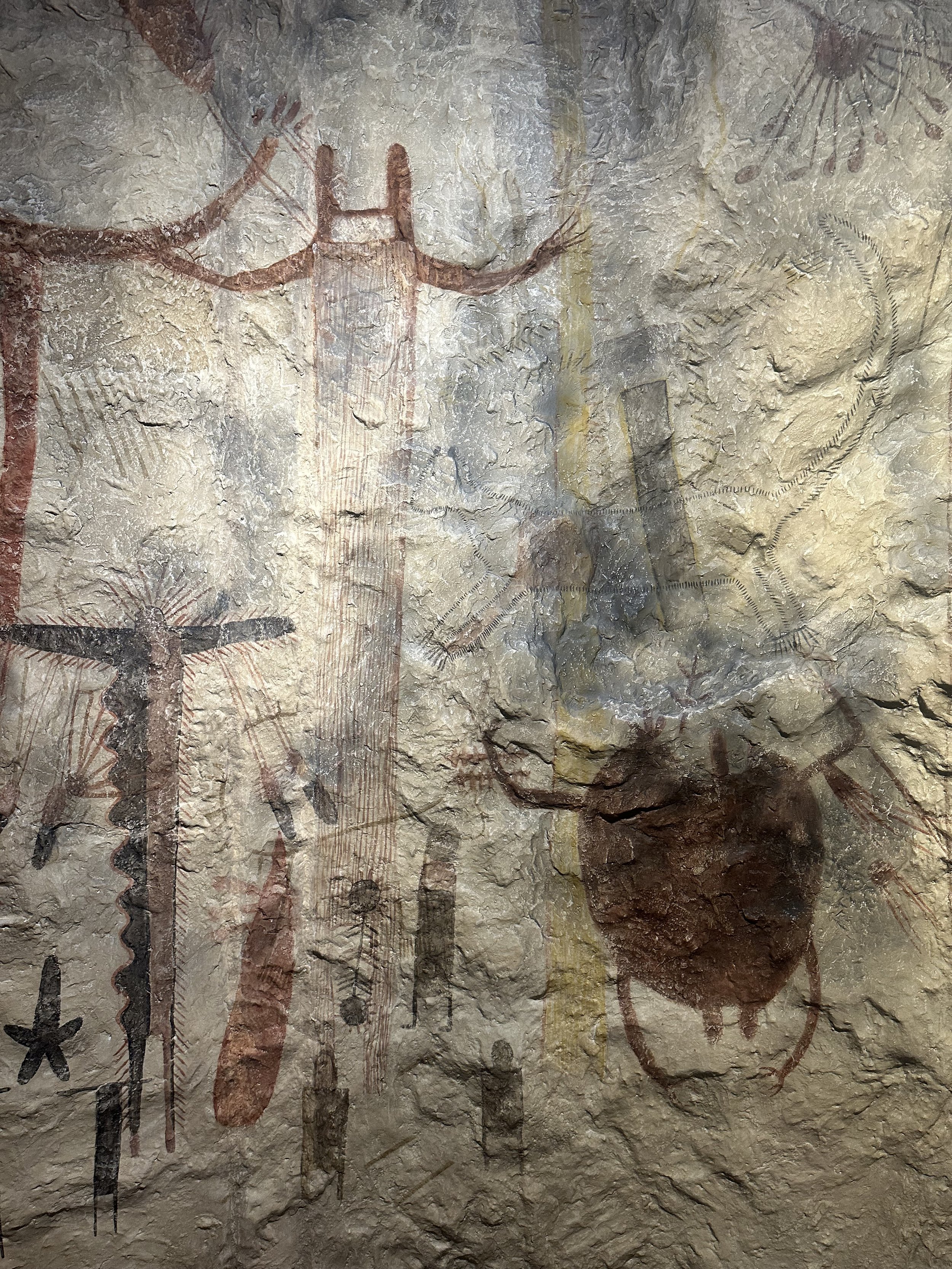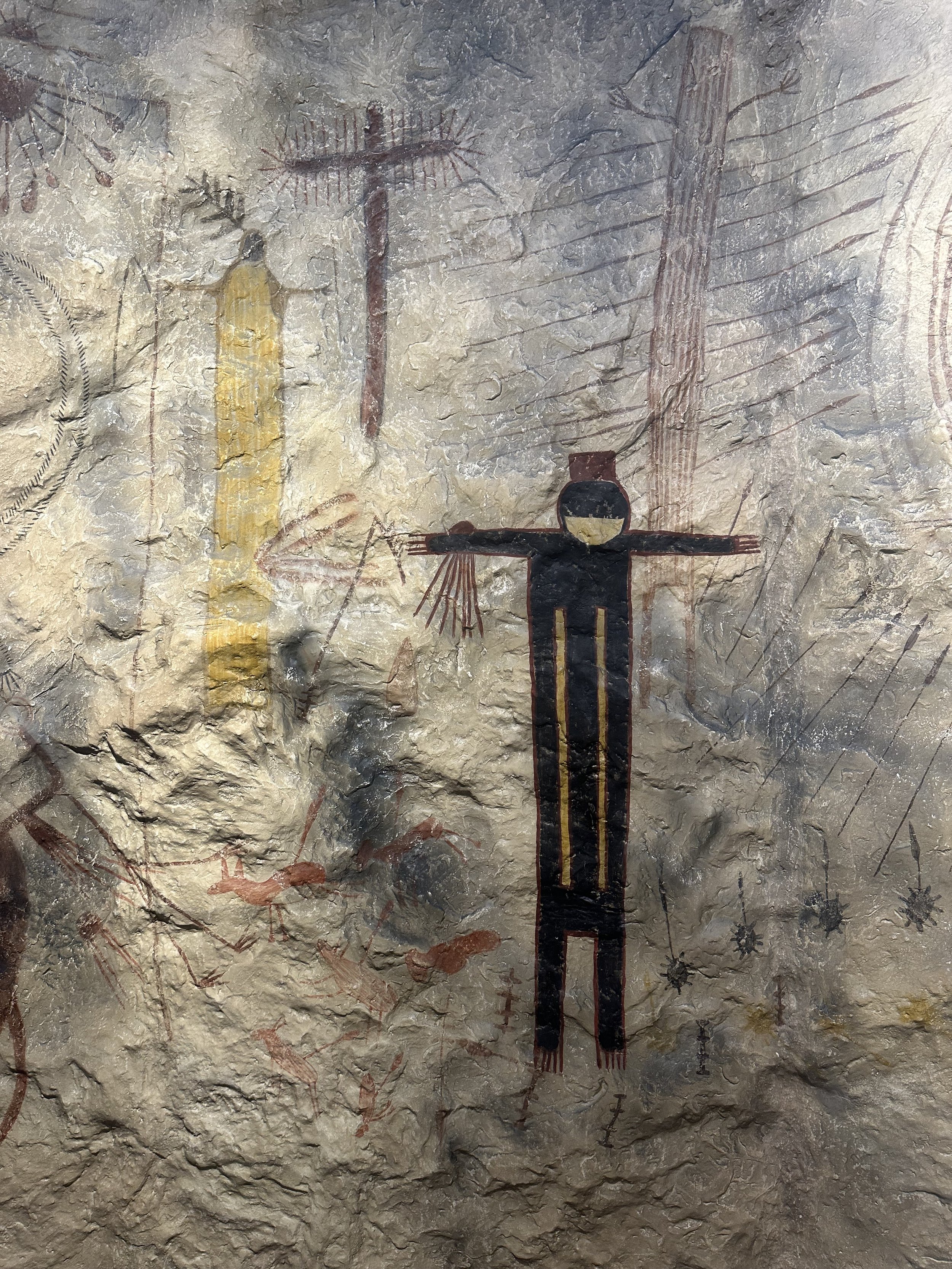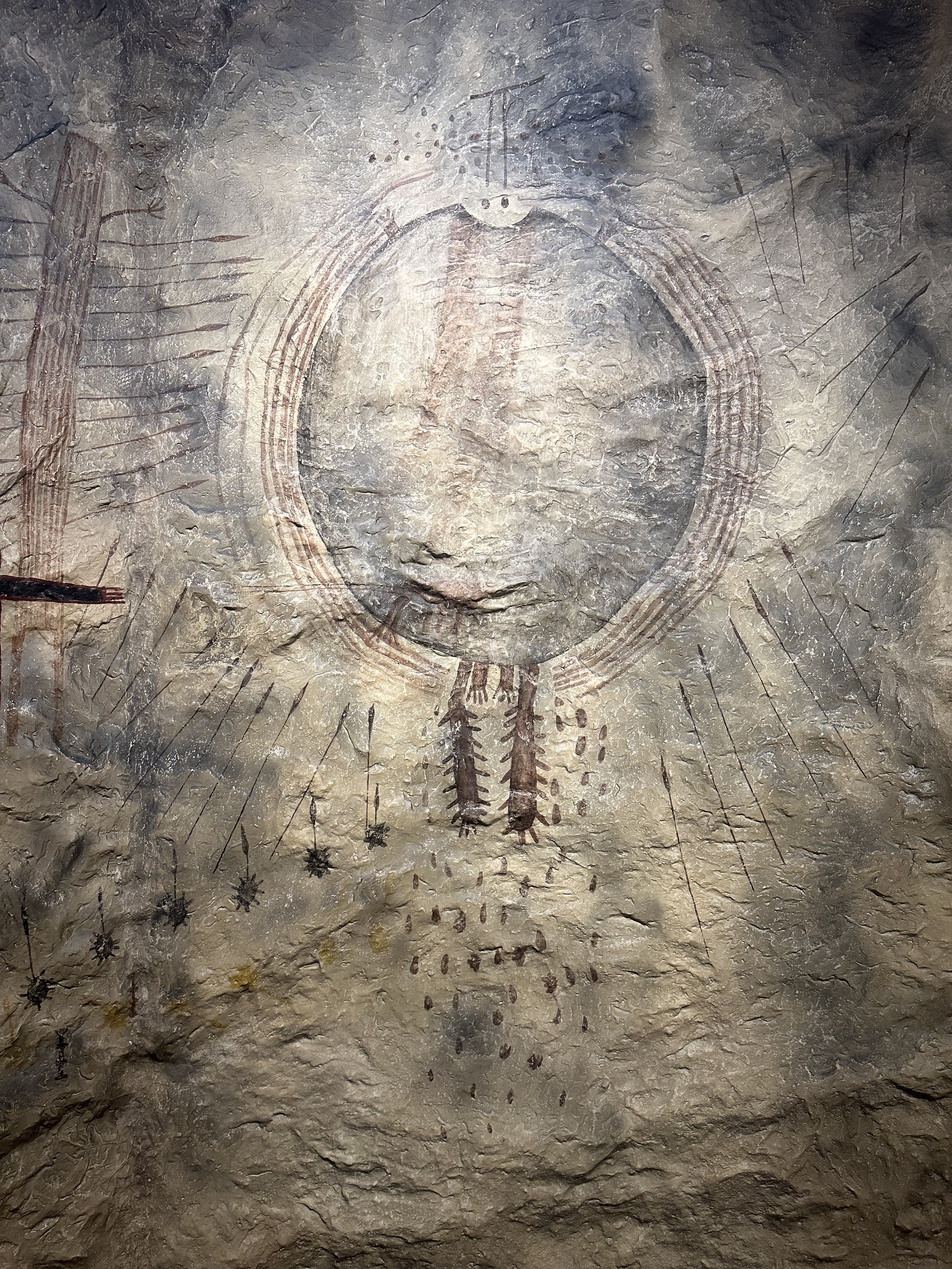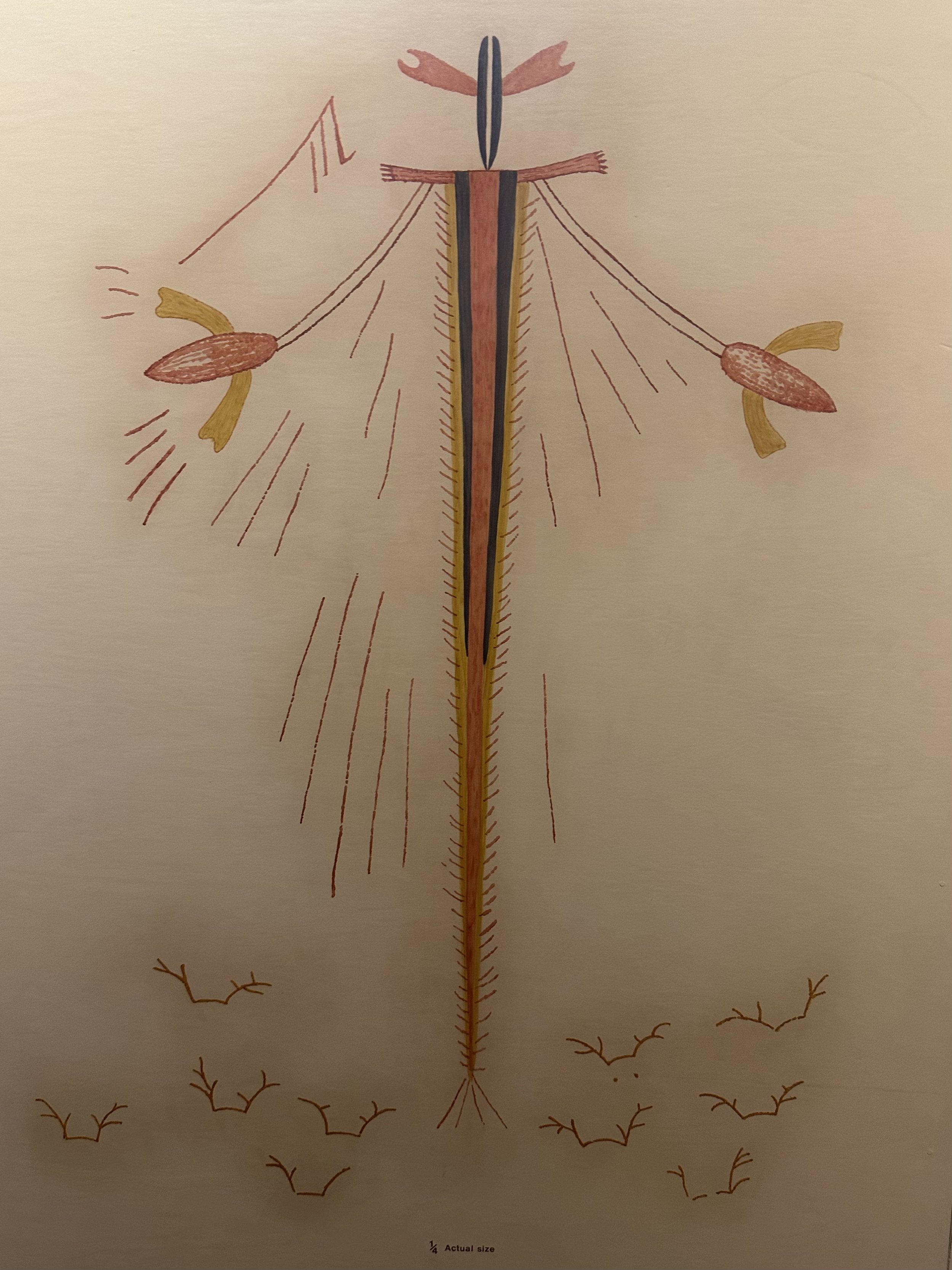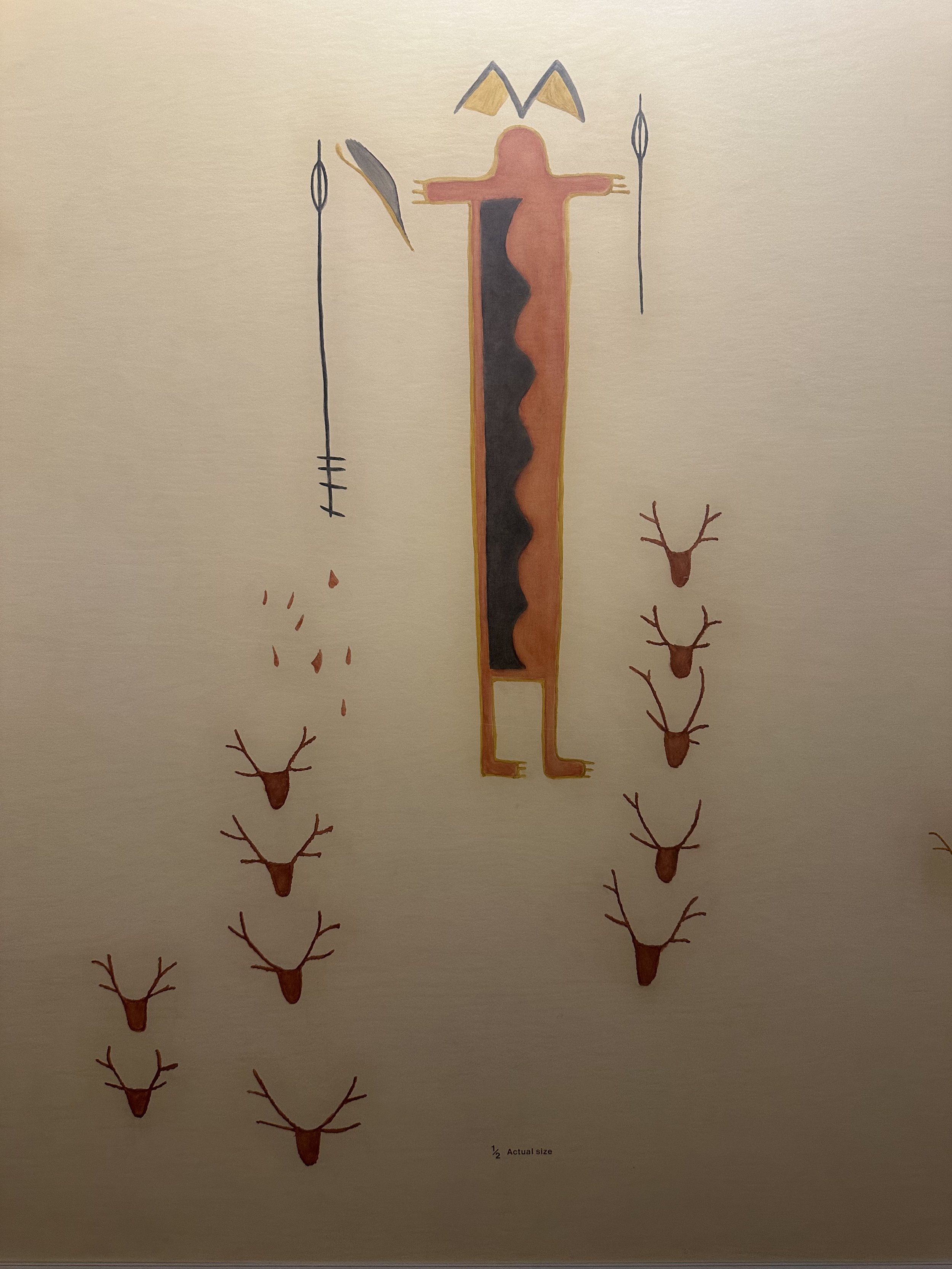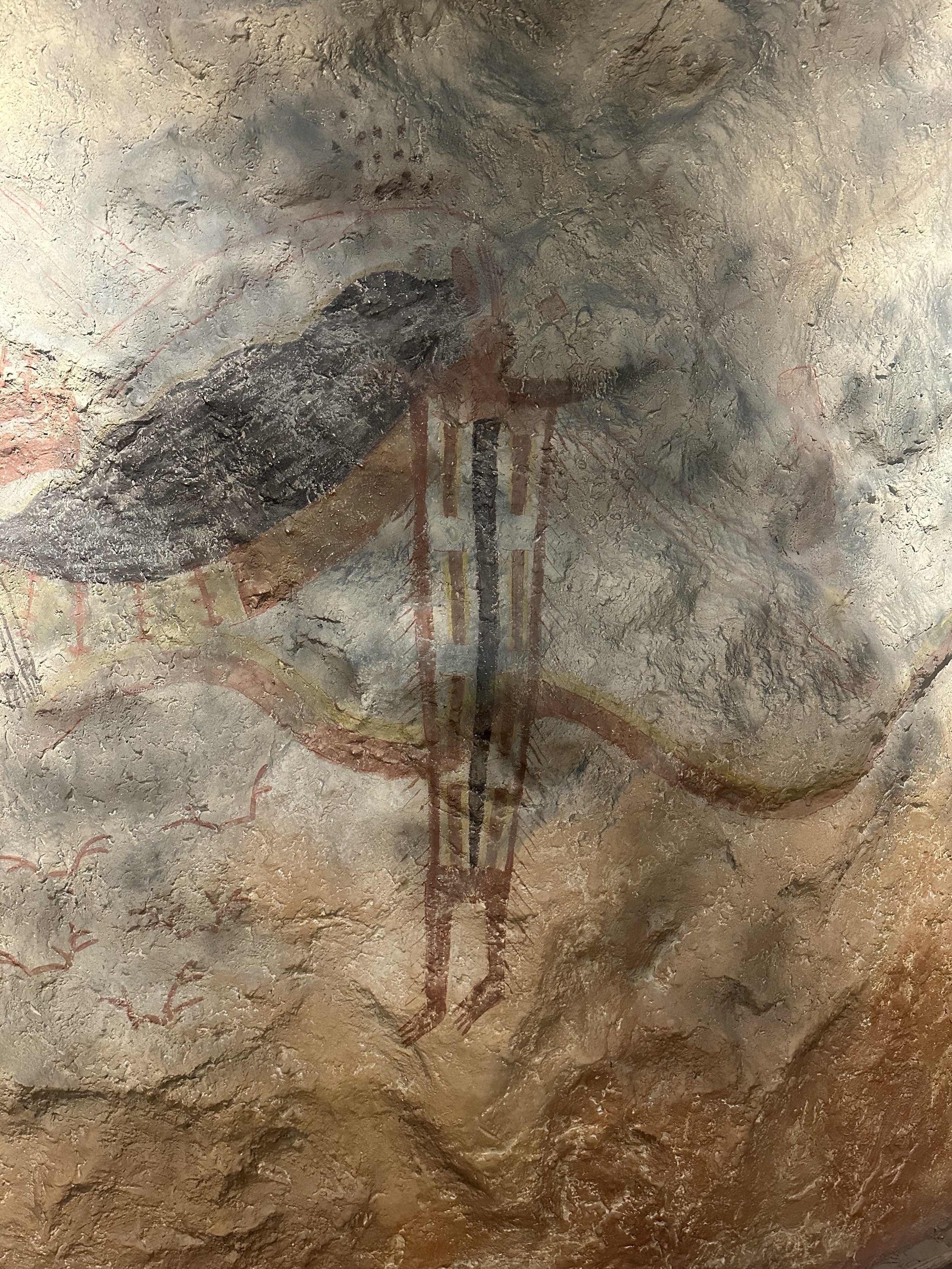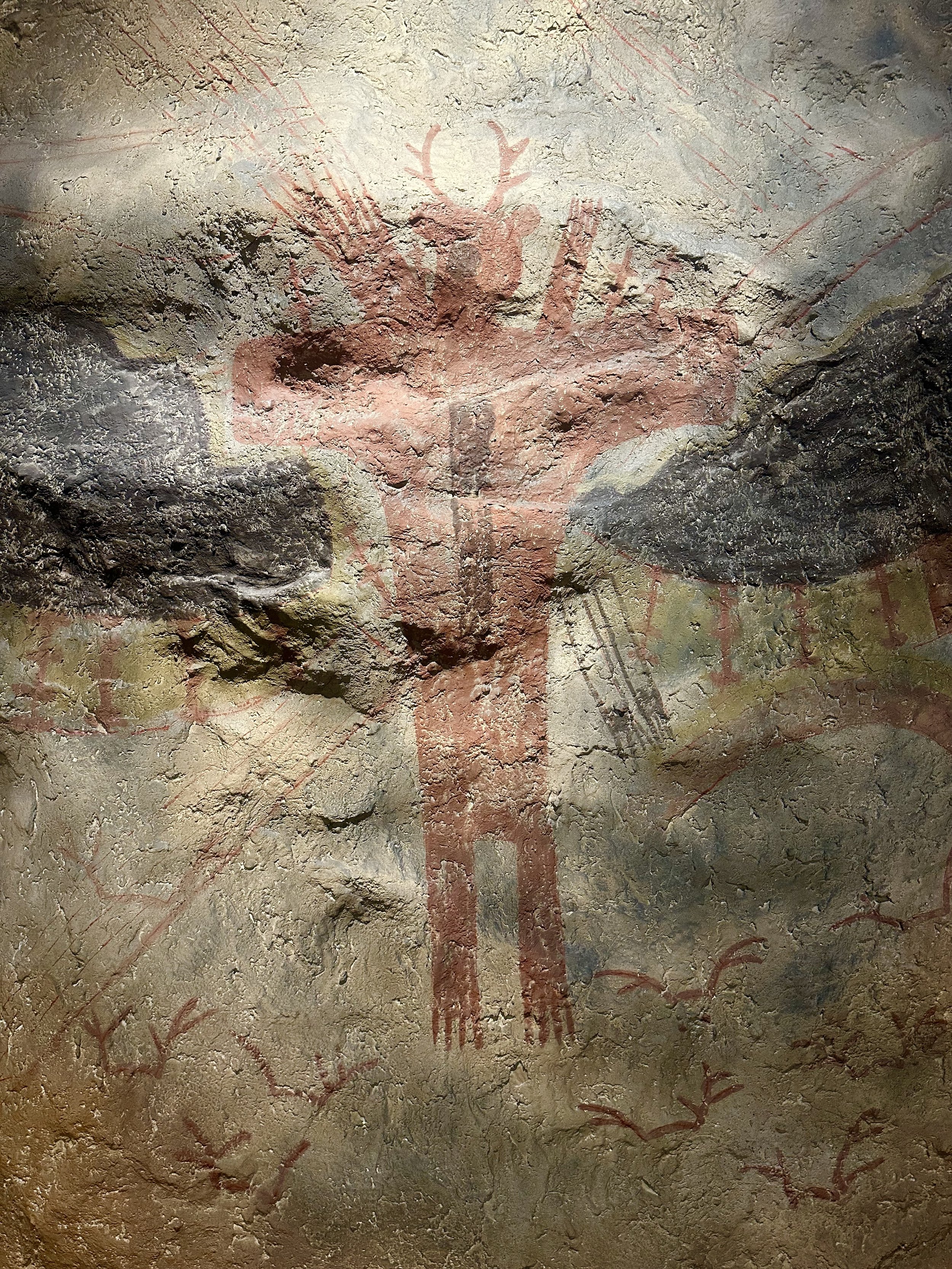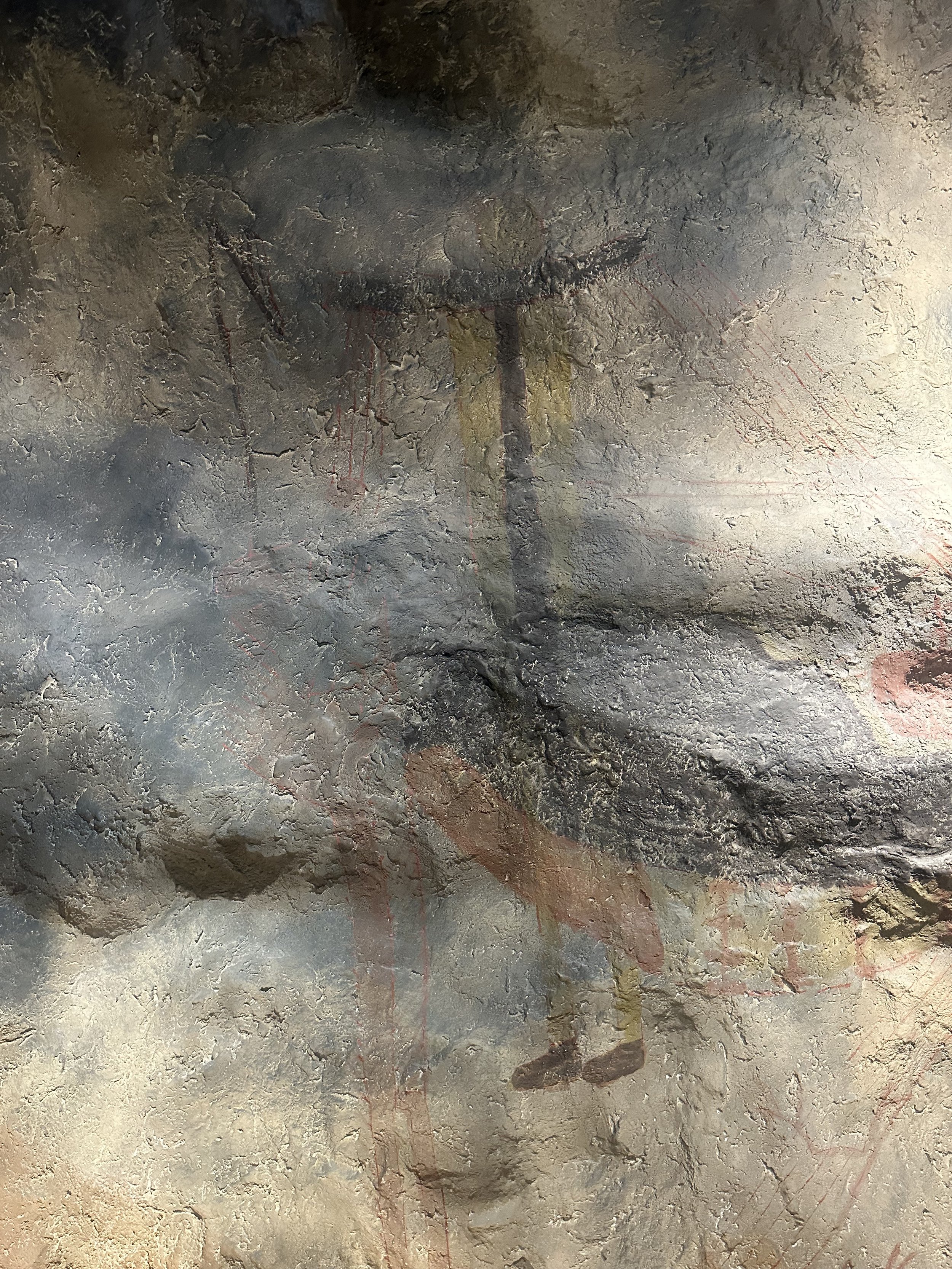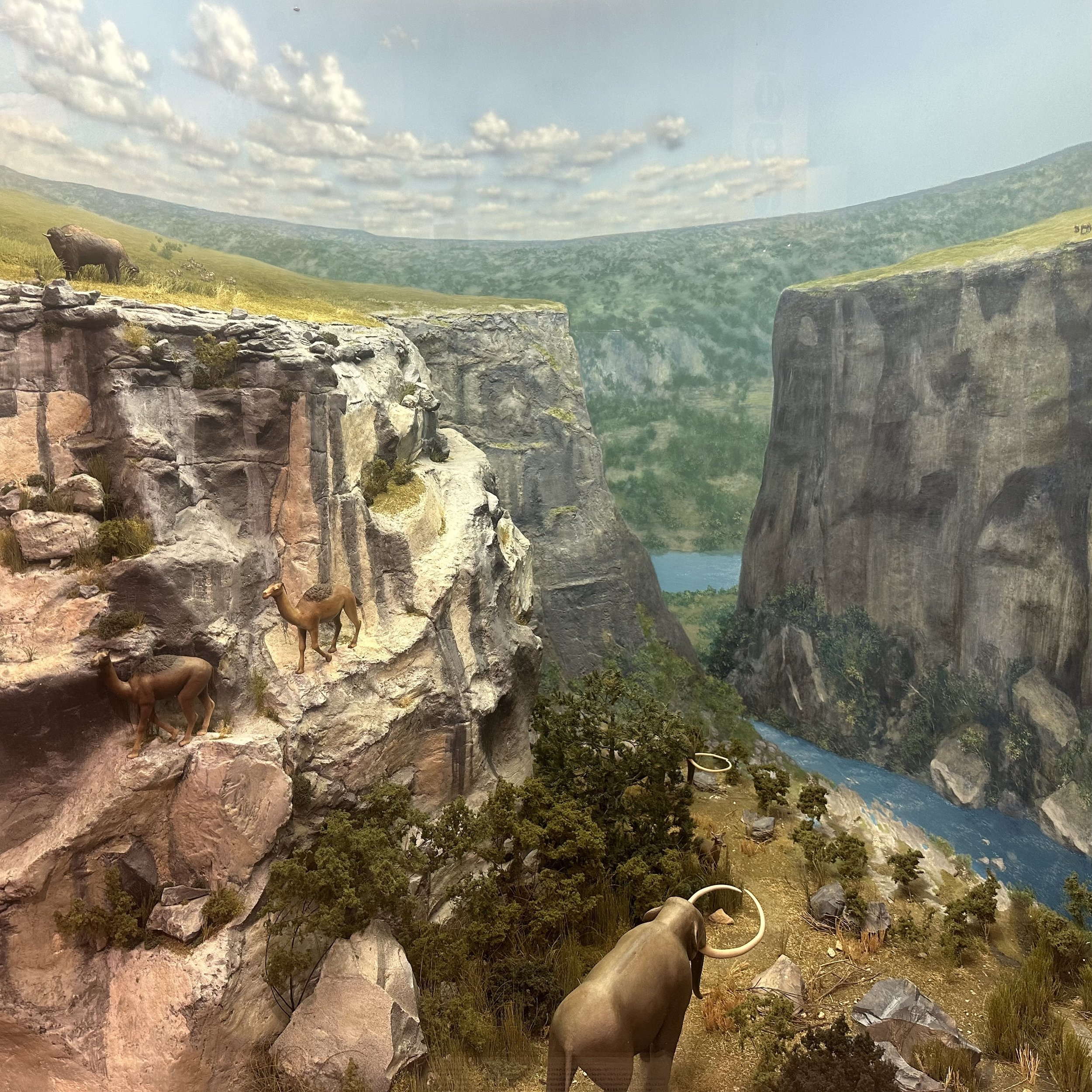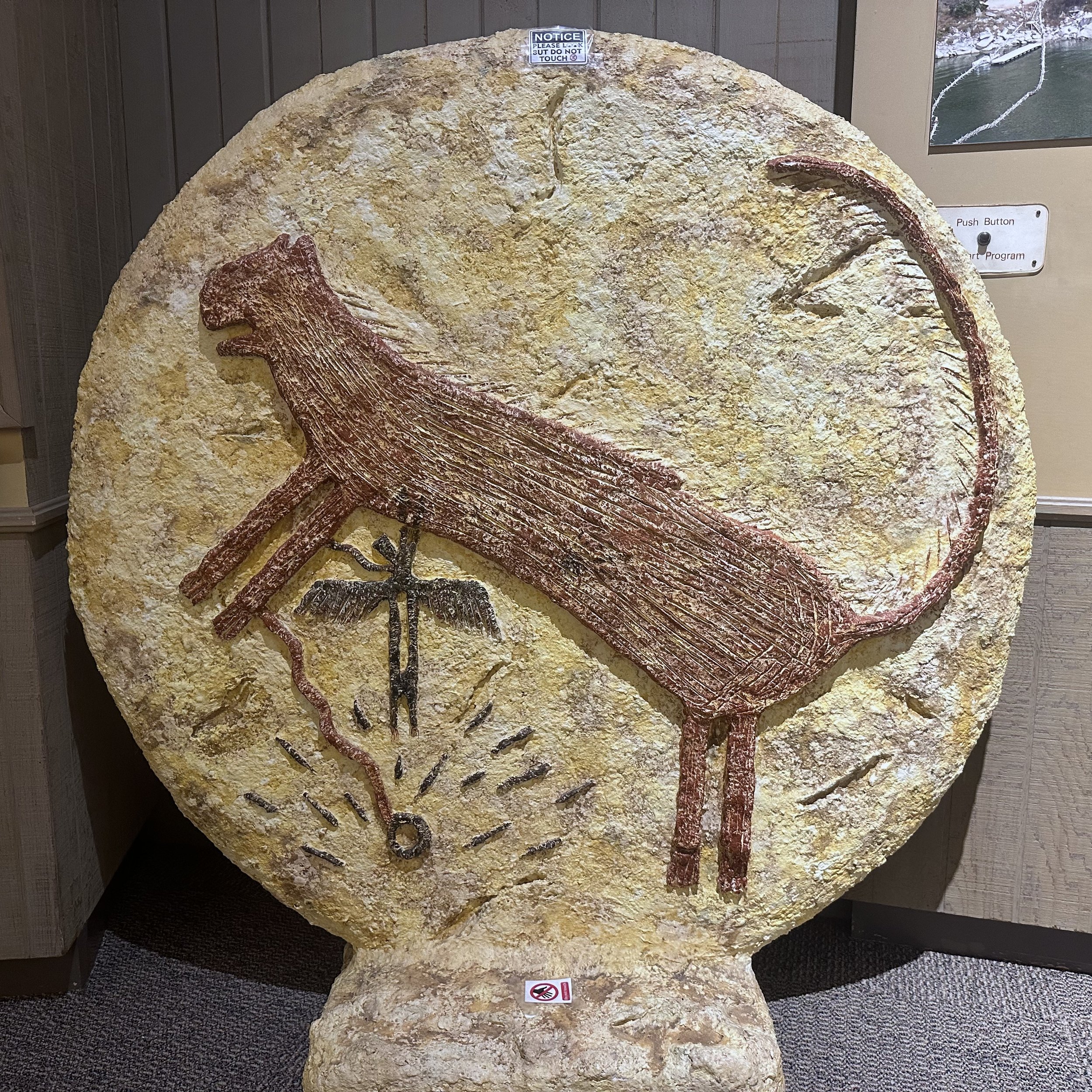
Seminole Canyon State Park and Historic Site
First & foremost, you may only see the pictographs via a guided tour. There are VERY limited slots on these guided tours and in the summer they are even more limited. So check the park’s website prior to heading to the park. While the museum is great, you will be disappointed if you planned on seeing the pictographs but did not book a tour. “Fate Bell Shelter, Wednesday through Sunday at 10am and 3pm. ONLY 10am during June, July, and August. Tour sizes are limited and tours are subject to cancellation.”
Seminole Canyon State Park and Historic Site contains what archaeologists call the Fate Bell Shelter which has some of the oldest known pictographs in the United States. Those pictographs are what’s known as Pecos River rock art and they’re dated to around 4,000 years old although they could be up to 5,000. These painting are some of the best preserved in the entire world and have been compared to the cave paintings of France and Spain.
Some of the most prominent paintings in the area feature human-like beings holding bags made of prickly pear cactus pads sewn together. Many of them are also carrying atlatls and darts which would have been the weapon of choice prior to the bow and arrow. Many animals are also represented on the cave walls in the region.
Curiously though, the cave’s paintings changed from its earlier more detailed forms to later more abstract representations. And according to the museum, this is a pretty common evolution of art throughout the world. I would even suggest if you continue to abstract the forms they will eventually morph into the symbols of written language.
But then around 600 AD, a significant change occurred in the art with the arrival of the bow and arrow. It is most likely that these bringers of the bow and arrow were from the south and they probably belonged to a completely different cultural tradition. They were most likely not the same people who had painted shaman-like figures. They began using a lot more red paint which is why the new style is known as Red Monochrome. These new artists painted a lot more realistic animal and men. Often with the two engaged in a life or death struggle.
Much later, in 1590, Gaspar Castaño de Sosa became the first Spaniard to pass through this area on his way to New Mexico. It’s not known if he even noticed the paintings that lined the limestone caves that litter this harsh area.
The park has plenty of camping, hiking (not in the canyon), biking, and the museum is worth an exploration if you’re interested in prehistoric rock art.
Seminole Canyon is quite a distance from the Indians it got its name from. Between 1872 and 1914 the US Army’s Seminole-Negro Indian Scouts patrolled the area and protected West Texas from Comanche and Apache attacks. Surprisingly, not a single Seminole Negro scout was ever wounded or killed in battle and apparently 4 of them received the Medal of Honor.
I was unable to go to the cave but I did check out the museum and the pictures below are from there.
The really cool statue you should hike and see is called The Maker of Peace and it is by Bill Worrell.



